

RG&G BOXCABS 13-1 & 13-2
RC&G boxcabs 13-1 & 13-2 are based on a prototype that was owned and operated by a private contractor that was used by the Denver and Rio Grande narrow gauge to relocate trackage that would be inundated by the rising waters of the lake behind the Navajo dam on the San Juan River. The prototype was built by G.E. and was a 25 ton unit. Grant Line products produced an HO version many years ago and I had pair of those. Since the plans for the kit included full size (HO) drawings, I thought it might be fun to build one (or two) in large scale. I scanned in the plans and enlarged them to 1/24 scale. I found that the wheelbase was within about 6 scale inches of the wheelbase of USA's 44 tonner trucks, so they were chosen to power the units. 13-1 has the receiver and a weight equal to the weight of the battery which resides in 13-2. A MU cable connects the two so they always operate as a pair. I chose to deviate some from the original plans, leaving out a window that would only display the battery pack or receiver I mounted a muffler on the top to provide some additional interest. While the models are a little out of the time frame for the balance of the layout, they were a lot of fun to build. They will most likely be put to work switching one of the industries along the line. The following shows some construction details and additional photos of the units on the line.
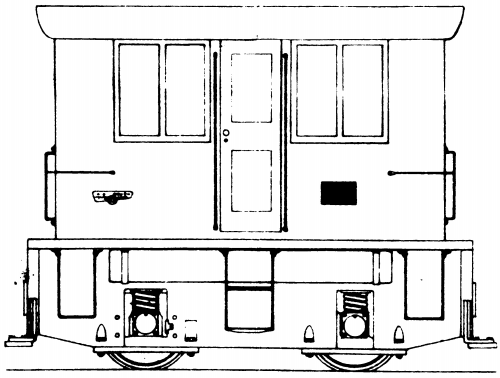
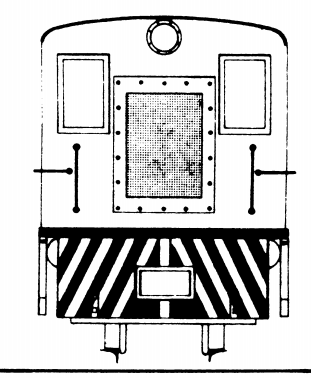
This photo shows the USA power truck. The only modification I made to it was to cut off the axle stubs, remove thetrack pickup sliders and drill and tap four holes in the top cover to mount the frame.
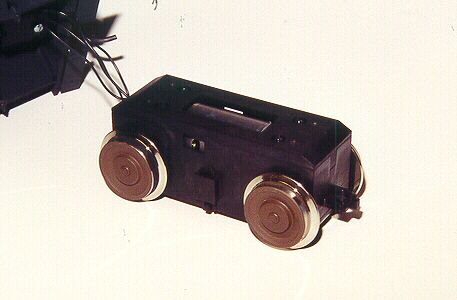
The frame was fabricated from .080" styrene. Ozark nut bolt and washer castings were used. The springs were wound frombrass wire and are non-functional. the air tanks were made from 1/2" aluminum, the steps are from brass strips and cut levers from brasswire. Sequin pins were used for rivet detail. The unit is fitted with Kadee gauge 1 couplers.
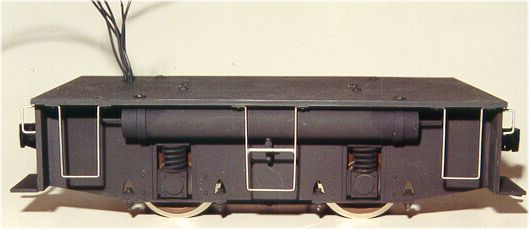
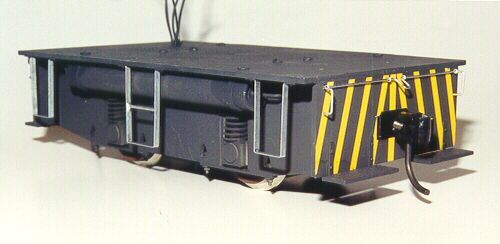
A head on view of the front of 13-1. Fine brass screen was used to simulate the radiator. The windshield wipers arebrass wire with styrene blades. The headlight is a piece of brass tubing with a vacuformed lens. The air horns are from Ozark. Themuffler is more 1/2" diameter aluminum with styrene piping.
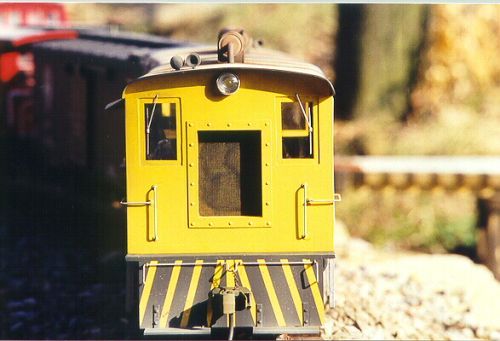
The following photos show the units on the line following their completion in the early 2000's. A six wire MU cable connects the two. The -2 carries a 14.4 volt nicad battery pack, theLocolinc receiver is in the -1 unit. Both units have working headlights on the engineers end and they are directional.

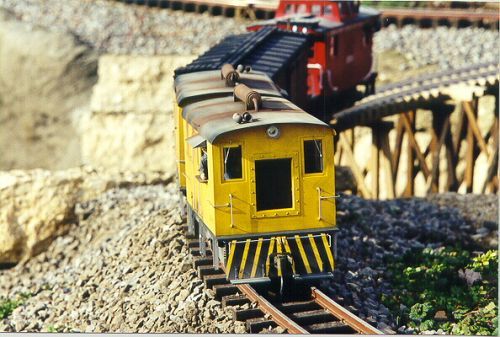
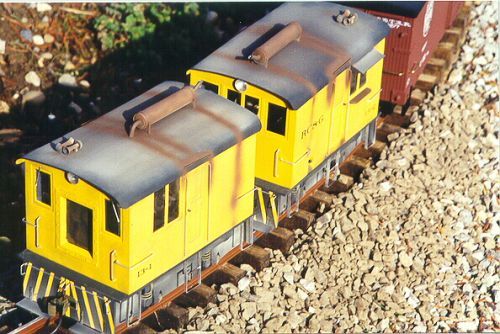
These two units have been quite popular and have traveled and operated on several other layouts as well. Eventually the nicad battery pack needed to be replaced and at that time the original Locolink receiver was replace with a REVO unit and Phoenix sound card and speaker were added. The battery was replace with a newer lithium battery. They are still a favorite when I want to operate on short notice as they are easy to carry to the layout and will run for hours on a single charge.
Updated 2/28/19
Return to the Motive Power page